Summer and peaches are things inexorably linked, but I also associate this splendid fruit, one of my favourites, with Surrealism. Let me be explained. If you are a little interested in Surrealism, you surely know that one of the main intelectual creators of this avant-garde movement was Spanish, Luis Buñuel, a film maker who remained surrealist his whole career and won an Oscar in 1973 with The Discreet Charm of the Bourgeoisie. Well, the fellow was born in a lost province, the second less populated and the most infrastructurally forgotten in Spain, Teruel, to be more precise in the little village of Calanda. Teruel is one of the provinces of Aragón, an independent kingdom from the 11th till the beginning of the 18th century.
Calanda is well known for two things, apart from being Buñuel's home town: their peaches, specially the end of the summer ones, and the tamborrada. The tamborrada is an event that occurs in Easter. On Good Friday, hundreds of people dressed in Nazarene purple meet in Calanda's main square at 12 PM and play drums for 24 hours, till their hands bleed, to remember the suffering of Christ in the cross. Also known as rompida de la hora, the ‘breaking of the hour’ is an awesome –and surrealist, isn't it?– tradition indeed, but amazing as well is this refined old Aragonese recipe, so old that you couldn't believe that such a gastronomic relic combines fresh fruit with meat.

I chose four ripe peaches, deep yellow, so scented, that the whole kitchen smelled like an orchard. Take care that they are ripe but hard when touching them. We'll need besides 350 gr of grind meat, 50 gr of French white bread center, 2 eggs, 2 medium-large onions, 350 ml of meat stock, some white flour, extra virgin olive oil, pepper, a bay leaf, water, and salt.
The Spanish sauce
First we prepare the Spanish sauce, based on a roux, onions –optional–, meat stock and/or wine. For this recipe we'll use onions and no wine. In a saucepan we sauté the finely chopped onions in two olive oil tablespoons over a low heat. Once they are tender but just slightly golden, we’ll reserve the half of them in a large bowl, the other half have to remain cooking till well golden.
In this moment we add a tablespoon of flour to our onions in the saucepan to make the roux. I advise to use for any sauce based on roux an egg beater to stir the mix flour-grease; we pour then the meat stock and a cup of water without stopping stirring with the beater, this way we’ll have not a single lump in our sauce. Let it cook softly 30 minutes, stirring from time to time.
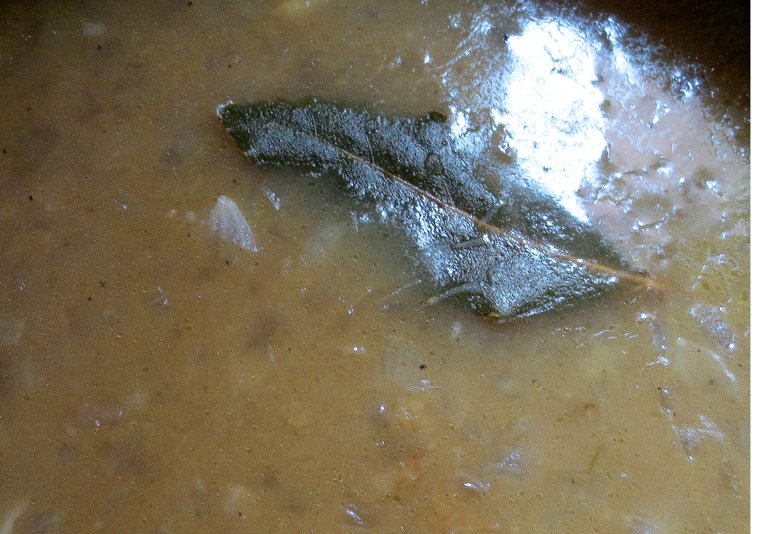
The farce or filling
While the sauce is cooking, the bread center must be soaked in a bowl with milk and then strained.
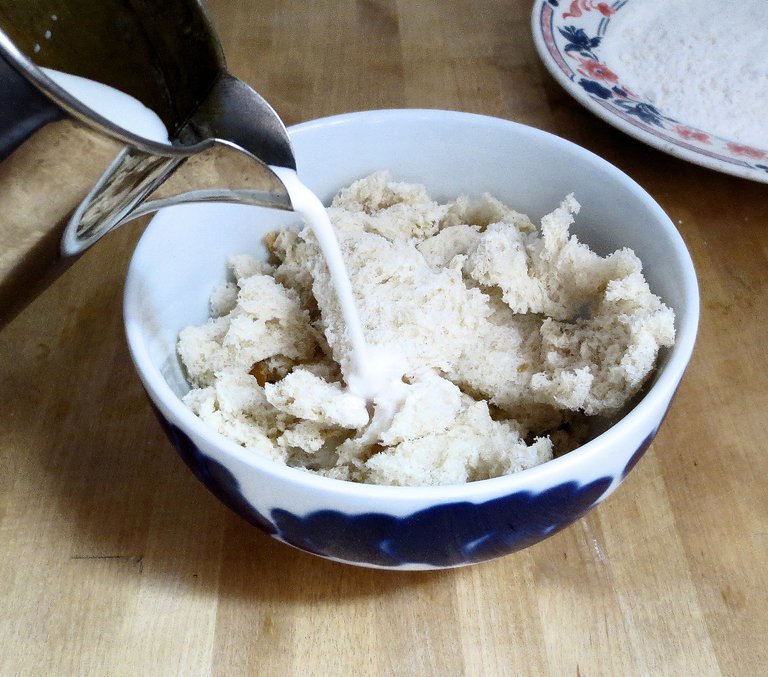
We put the reserved sauté onions back in a saucepan adding one oil tablespoon and the meat, stir the mix well over a high heat until the meat is cooked. We lower the heat and add the bread center, salt, and freshly ground pepper, we blend all these ingredients intimately until we obtain the texture of a patê. Let the mixture cool a bit and add a whole egg. Don't be afraid of using your hand to knead the farce, one of the great pleasures of cooking is using your hands!
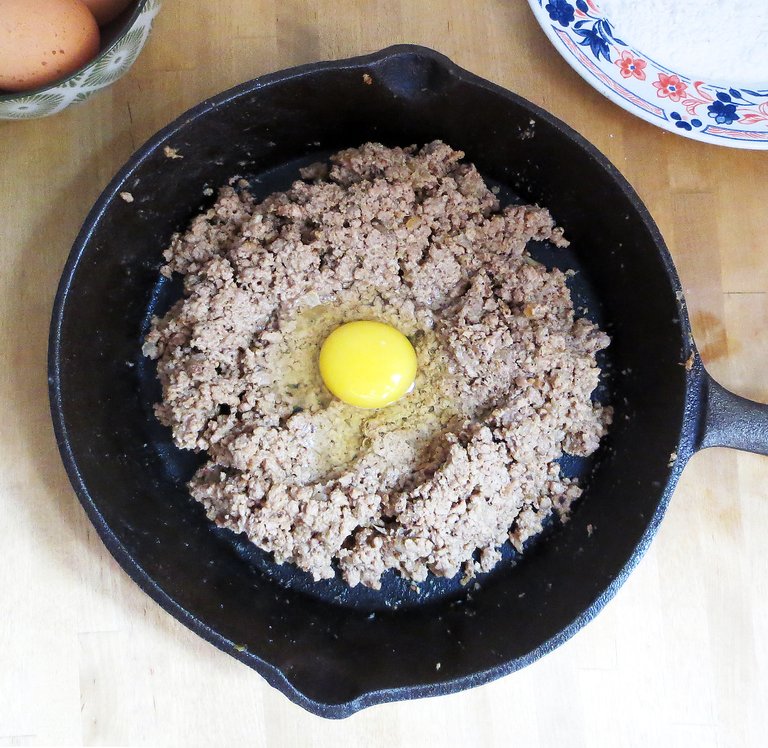
Stuffing and battering the peaches
Peel carefully the peaches and cut them into halves cutting from the top of the fruit around the pit, separate cautiously the two halves. This is the only laborious point of this recipe: after cutting the peach, separate slowly the peach flesh from the pit using your fingers as if you were a midwife bringing a newborn to life.
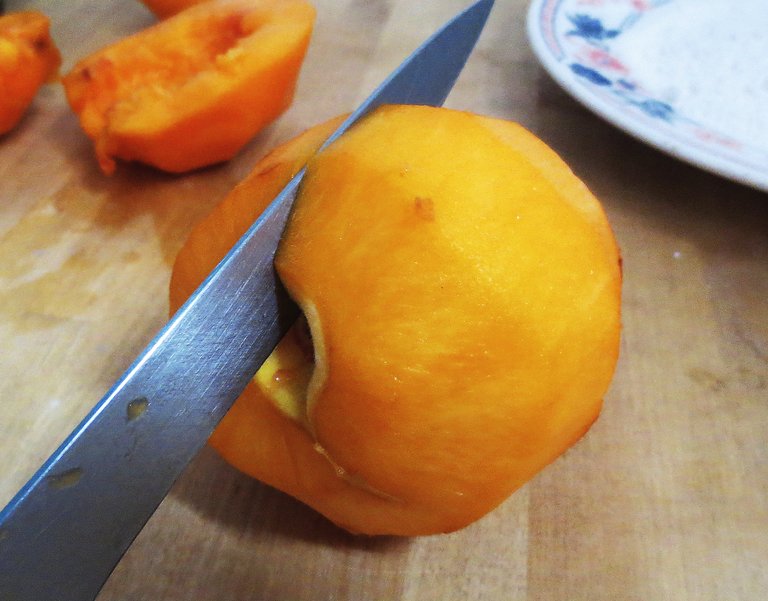
Now we put the filling into the hollow of the half peaches.
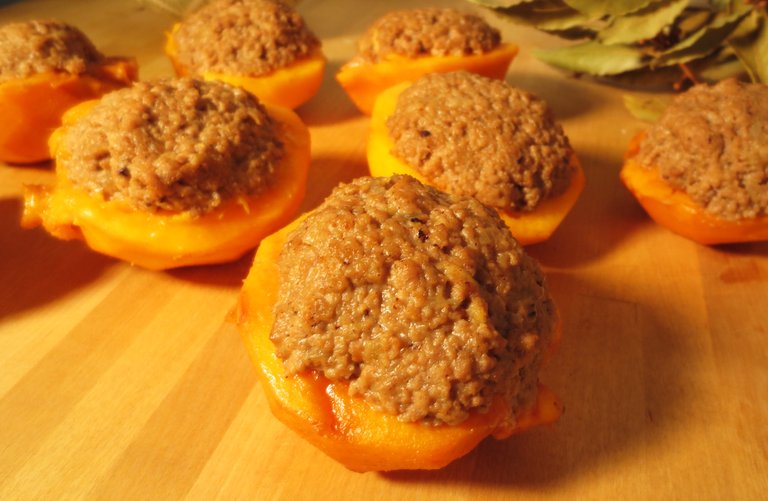
Fill a dish generously with flour and beat an egg in a bowl. We heat a saucepan filled half and inch with oil, coat the peaches stuffed side in flour and next in the beaten egg.
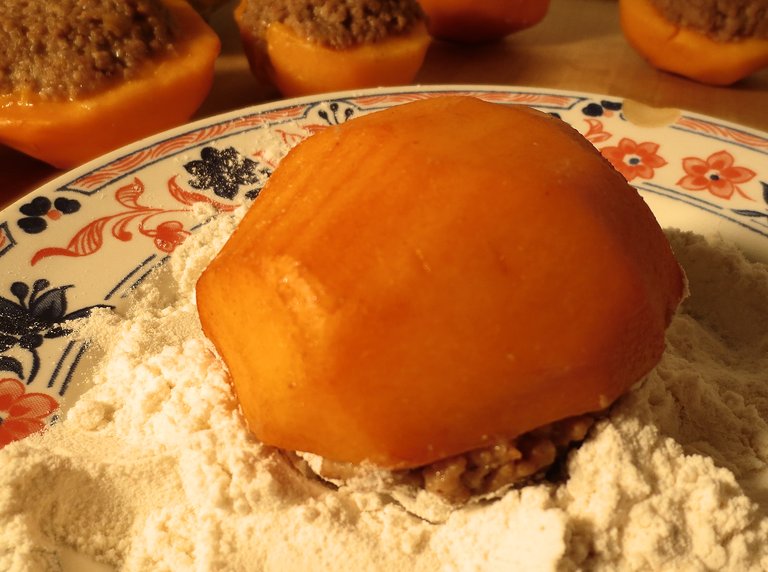
Fry only the stuffed and battered side of the peaches over a high heat and put them in a clay casserole as every batch in golden with the battered side up.

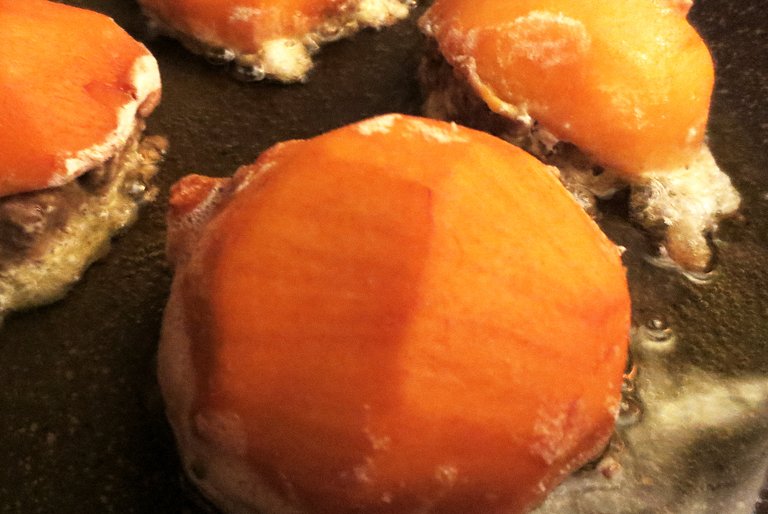
Stewing the stuffed peaches
Sieve the sauce with a Chinese colander and bath the peaches with it. Let cook over a soft heat the peaches in the clay casserole for 25 minutes. If you cook this recipe the day before enjoying it, the best. If you want to know which wine will make the perfect pairing with the melocotones rellenos, I´ll tell you: a PDO Somontano, a wine produced in Huesca, the far northern province of Aragón, will make the perfect match.
As the bookworm I am, let me finish with a petit advise from M.F.K. Fisher: don't get obsessed with the size, aspect, and cleanness of your kitchen. ‘I do not think that god food can come from a bad kitchen.’


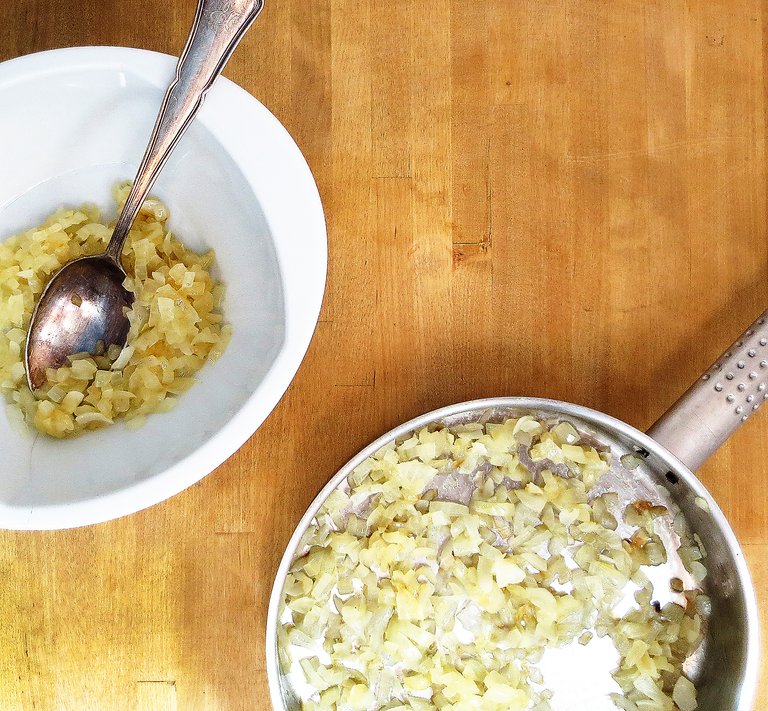
This post was shared in the Curation Collective Discord community for curators, and upvoted and resteemed by the @c-squared community account after manual review.
This sounds absolutely delicious and I love the Buñuel association!
Thank you!!! I think we Spaniards tend naturally to surrealism. Perhaps that's the reason I make unusual associations all the time– Like 'Luis Buñuel and the Giant Peach' :D
I guess it needs to cool down a bit because I now have not that much energy to cook something so delicious with the right amount of effort to put in. But I'm absolutely sure that I'm going to make this recipe later!
I understand you totally, we're having a heat wave and the temperature in Madrid raises to 42 ºC. I hope you can make the recipe at the end of the summer, peaches are great at that time!!!
What a great dish! I love the history behind it and the town of Calanda. I’ll need to google the song to listen to while preparing this dish! Great quote too from M.F.K. Fisher!
Thank you so much!!! You can find the song in the album Music For The Spanish Kings, directed by Jordi Savall, one of the greatest musicians ever who has dedicated his whole life to early music.
Oh, and I love M.F.K. Fisher, her prose is one of the finest I've ever read and not only related with gastronomy <3